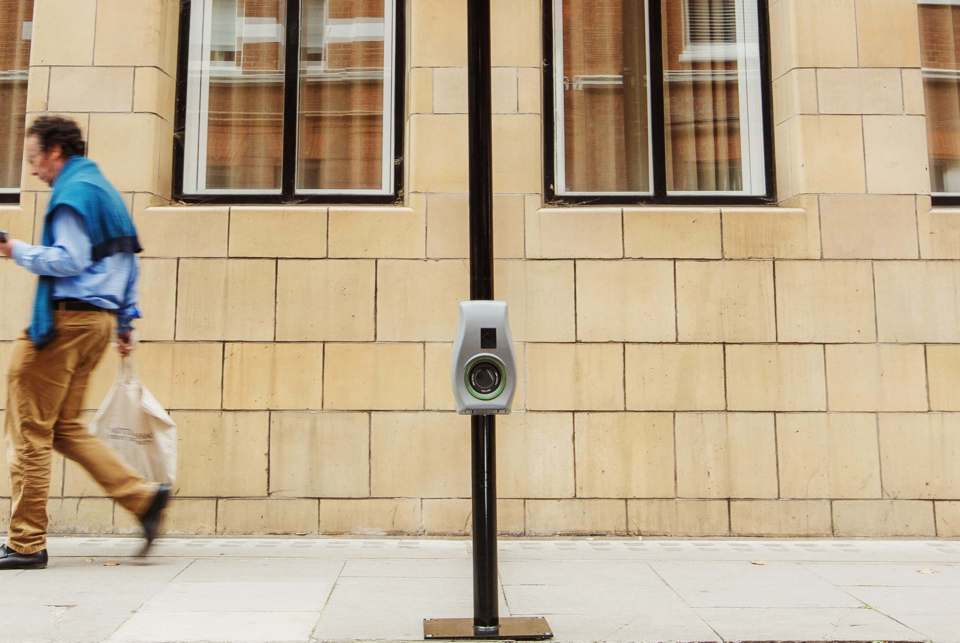The number of on-street residential charge points funded by the Governments grant scheme currently stands at 2,641 with a further 8,415 approved but not yet installed, new figures suggest.
As of 1 April 2022, the data from the Department for Transport (DfT) shows that the On-Street Residential Chargepoint Scheme (ORCS) has funded 2,641 public charging devices, which have been installed local authorities in the UK.
It suggests that 603 on-street charging devices were installed after being claimed for by the local authorities in the previous three months, while funding has also been awarded for 8,415 additional ORCS charging devices to be installed in the future.
The AA is warning that the DfT’s target of 120,000 on-street chargers by 2030 could be missed if more isn’t done to help promote on-street charging.
It also says that charging from a lamppost is cheaper than a typical on-the-road rapid charge point, with costs as low as 24p/kWh compared to around 45p/kWh at a rapid charge point.
Those with a home charger can unlock even cheaper rates if they can find a dedicated off-peak EV tariff.
Jack Cousens, head of roads policy for the AA, said; “With around a third of households without any dedicated off-street parking, providing accessible and affordable local charging solutions is key.
“Ideally, drivers would like to charge as close as possible to their home, yet with around 10,000 on-street charge points currently planned, the installation rate needs to increase to more than 1,000 charge points each month just to meet the Government’s target.
“We should also remember that that many rural areas suffer from a lack of off-street parking, and we are concerned that on-street charging could become bookmarked as an urban problem.
“Sadly just 87 councils out of almost 400 across the United Kingdom have applied for the on-street residential charge point grant since 2017. This needs to dramatically improve so that EV drivers across the country have access to good, local charge points.”
Paul Hollick, chair of the Association of Fleet Professionals (AFP), says that as businesses move to electrify their company vehicles ahead of the Government’s 2030 deadline, the high number of drivers without space available off-road to have a charger installed is a “major obstacle to electrification”.
“This is especially the case for electric vans, whose drivers are much more likely to live in a terraced house or apartment and lack this kind of parking,” he said.
A map of the UK that shows where fleets need kerbside charge points close to the homes of company van drivers has been unveiled by the AFP.
Home and workplace charging
The new figures from the DfT also show that funding through the Electric Vehicle Homecharge Scheme (EVHS) and the Domestic Recharging Scheme (DRS) (the predecessor to the EVHS) have delivered 331,882 domestic charging devices since 2013.
The EVHS has funded the installation of 291,549 domestic charging devices, with 121,001 devices installed since April 1, 2021, an 86% increase compared to the previous 12-month period.
In terms of workplace charging, the Workplace Charging Scheme (WCS) has funded the installation of 26,424 sockets in workplace car parks since the scheme started in 2016.
It has funded 10,727 sockets installations since April 1, 2021, an increase of almost 60% compared to the previous 12-month period.
Meryem Brassington, electrification propositions lead at Lex Autolease, said: “It is reassuring to see the latest Government data showcasing the significant increase in take-up of the domestic EV charging grant across the UK.
“While this is encouraging, the Government and industry bodies must continue to work together to showcase the power of the UK’s charging infrastructure to drive the transition to an electric future and provide affordable alternatives as the cost of living continues to increase.
“This has been supported by the government’s requirement to install charge points in new homes and buildings from next year, but it is crucial that we ensure connectivity across the country and not just in city hubs.”
> Interested in comparing electric vehicle data? Check out our EV tool.
> Interested in ensuring the efficient use of EVs. Check out our dedicated editorial sections: Insight & policy | EV news | Charging & infrastructure | Costs & incentives | Benefit-in-kind | EV case studies | EV road tests






















Login to comment
Comments
No comments have been made yet.